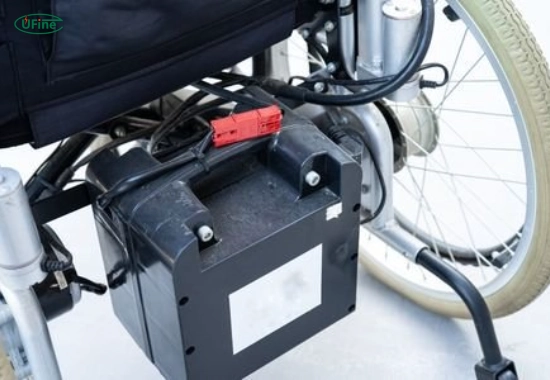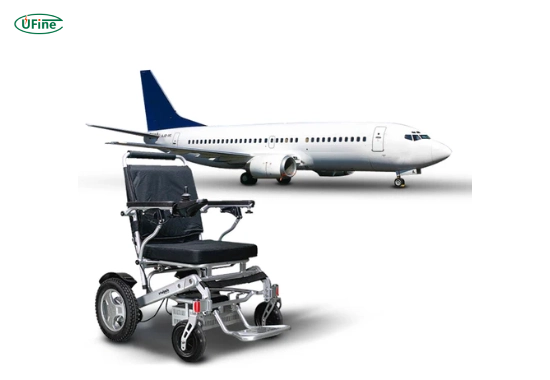Transporting batteries for power chairs can be tricky, but it doesn’t have to be. How do you safely travel with power chair batteries? The short answer: You must follow safety guidelines, understand airline and transport rules, and pack them properly to avoid leaks or damage.
In this complete guide, we’ll walk you through everything you need to know about transporting power chair batteries—whether you’re flying, driving, or shipping. From battery types to airline restrictions, you’ll find clear, easy-to-follow tips that help you avoid costly mistakes and confidently travel.
Part 1. What are batteries for power chairs?
Batteries for power chairs are rechargeable energy sources that power electric wheelchairs. These batteries are designed to be durable and long-lasting while offering users mobility and independence.
There are a few main types:
- Sealed Lead-Acid (SLA) – Most common and airline-approved.
- Gel Batteries – An SLA battery that uses gel instead of liquid.
- Lithium-ion Batteries – Lightweight and powerful, but more regulated during transport.
Each type has different handling and transportation rules. Knowing what kind you have is the first step in safe transport.
Part 2. Why is safe battery transport critical?
Transporting batteries the wrong way can be dangerous. Batteries contain chemicals and electrical energy that, if damaged or short-circuited, could leak, overheat, or even explode.
Safe transport helps to:
- Prevent fires or leaks
- Comply with airline regulations
- Protect the battery from damage
- Ensure your power chair works when you need it
Part 3. How to identify your battery type?
Before you pack anything, check your power chair manual or battery label. Look for terms like:
- “Sealed Lead Acid”
- “Gel Cell”
- “Lithium-ion”
If you’re unsure, call the manufacturer or supplier. Knowing the exact type will determine how you’re allowed to transport it.
Part 4. Airline rules for transporting batteries
Flying with a power chair? Airlines have strict rules for battery transport.
Here’s what you need to know:
- Sealed lead-acid and gel batteries are usually allowed on board. They can stay installed in the wheelchair.
- Lithium-ion batteries may need to be removed and stored in your carry-on.
- Watt-hour limits apply: Most airlines allow lithium batteries up to 300Wh.
- You may need to notify the airline 48-72 hours in advance.
Always check with your airline before your flight. Each carrier can have slightly different policies.
Part 5. How to pack batteries for safe transport?
Proper packing keeps your battery safe and avoids damage in transit. Here’s a simple checklist:
- Turn off the power chair
- Disconnect the battery (if removable)
- Cover battery terminals with electrical tape to prevent short circuits
- Use a hard, protective case if transporting separately
- Label the package with “Non-spillable battery” or “Lithium-ion battery” as appropriate
- Avoid extreme heat or cold during travel
If shipping by mail, use UN-approved packaging and comply with courier safety regulations.
Part 6. Can you transport batteries in a car?
Yes, you can—but you still need to take precautions. When transporting batteries for power chairs in a vehicle:
- Secure the battery to prevent it from tipping or sliding
- Keep it upright to avoid leaks
- Avoid direct sunlight or freezing temperatures
- Don’t place near flammable items
Ventilation is also essential. If transporting a lead-acid battery, ensure the area is well-ventilated to avoid gas buildup.
Part 7. Tips for international travel with power chair batteries
Going abroad? Here’s what you need to do before flying:
- Contact the airline and inform them about your power chair and battery type.
- Check local laws—some countries have stricter battery rules
- Bring documentation like your battery’s datasheet or MSDS
- Pack a spare charger and a voltage adapter if needed
Tip: Some countries require proof that your battery meets UN testing standards. Get this from the manufacturer.
Part 8. What to do if your battery is damaged during travel
If your battery is damaged, do not use it. Signs of damage include:
- Swelling or leaks
- Cracked casing
- Strange smells or excessive heat
Here’s what you should do:
- Isolate the battery immediately
- Do not charge or attempt to use it
- Contact your battery provider or manufacturer
- Dispose of it through a certified battery recycling centre
Never throw a damaged battery in the trash—it’s a serious fire hazard.
Part 9. Battery transport checklist for travellers
Before your trip, run through this quick list:
- ✅ Identify your battery type
- ✅ Contact the airline or transport company
- ✅ Pack the battery correctly
- ✅ Bring necessary documentation
- ✅ Secure the battery during transit
- ✅ Charge before you go
- ✅ Bring backup cables and adapters
Being prepared makes your journey stress-free and safe.
Part 10. Best practices for storing power chair batteries
If you’re not using your power chair for a while, store the battery properly:
- Charge it to 50-70% (for lithium batteries)
- Disconnect it from the chair
- Store in a cool, dry place
- Avoid complete discharge
- Recharge every 1-2 months
Well-stored batteries last longer and perform better when you need them again.
Part 11. FAQs about transporting batteries for power chairs
Can I take my power chair battery on a plane?
Yes, but it depends on the type. Airlines usually allow sealed lead-acid and gel batteries. Lithium-ion batteries may require special handling and must meet watt-hour limits.
Do I need to remove the battery before flying?
Not always. If your battery is non-spillable and securely attached, it can often stay in the chair. Lithium batteries need to be removed and carried in your hand luggage.
What happens if my battery is too big for airline rules?
If your battery exceeds the watt-hour limit (usually 300Wh), the airline may not allow it. You’ll need to check alternatives like ground shipping or using a different battery.
How do I pack a spare battery when travelling?
Wrap the terminals with tape, place the battery in a hard case, and label it correctly. If it’s lithium-ion, keep it in your carry-on.
Can I ship my power chair battery by courier?
Yes, but you must follow shipping regulations. Use UN-approved packaging, correctly label the box, and declare it a battery shipment.
Related Tags:
More Articles

Where to Find the Right 18650 Battery Wholesale?
Discover how to choose a reliable 18650 battery wholesale supplier, compare prices, ensure safety, and avoid common buying mistakes.
18650 Battery Short Circuit: Risks and Safety Tips
Discover what happens during a 18650 battery short circuit, warning signs, and how to avoid fire, damage, and hazardous failures in your devices.
LiPo Battery Discharge Rate Guide & Calculation Tips
Understand LiPo battery discharge rates, C-ratings, and how to calculate max current. Essential guide for RC, drones, and electronics users.
High‑Capacity 3S LiPo Batteries: 5000 mAh vs. 10000 mAh
Compare 3S LiPo 5000mAh vs 10000mAh batteries by weight, power, and use. Find the best fit for your drone, RC car, or boat setup.
Top 5 Applications for Small 3S LiPo Batteries
Small 3S LiPo batteries power drones, RC gear, wearables, and robotics with high energy and low weight. Making them ideal for compact electronics projects.





